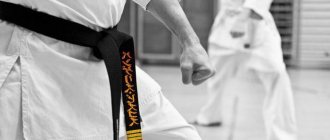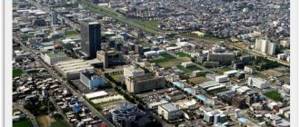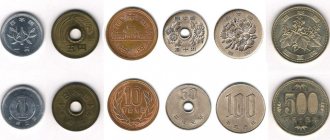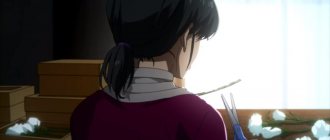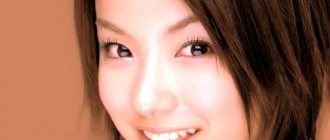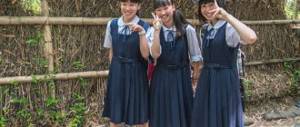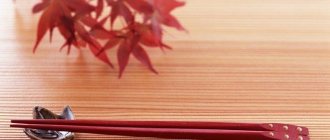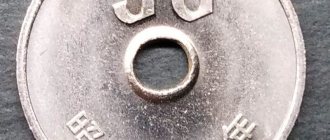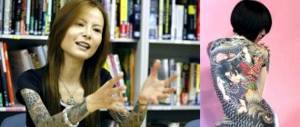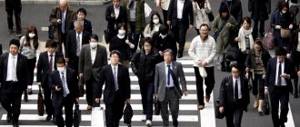Japan is a country literally permeated with mysticism and filled with sacred knowledge. Every Japanese sacredly honors the traditions of their ancestors and during the holiday tries to appease the spirits of the lower and upper worlds. For this purpose, since ancient times, Japanese demon masks made of wood and painted in bright colors have been used in various rituals. These items are of great importance not only in religious rituals, but also in the culture and art of the country. This will be discussed in the article.
Japan: the history of masks
Japanese mythology is very rich in characters who sometimes have completely opposite character traits. The fact is that in Japan it has always been customary to get along with a lot of demons and unclean spirits. The wise inhabitants of the islands never fought with evil spirits; on the contrary, they appeased them and, if necessary, could always enlist the support of spirits.
Masks have always had a sacred meaning for the Japanese; they were often used by samurai in battles. It was believed that the mask not only covered the face, but also, containing various spirits, helped the warrior to win, striking terror into the hearts of his enemies.
It is difficult to imagine the Noh theater without various masks. The tradition of performing theatrical performances arose around the seventh century. At this time, colorful theatrical shows took place near temples, and masks were made from clay and paper. They were extremely simple and served to hide the identity of the actor. It was only in the seventeenth century that Noh theater developed into something special, and masks turned into real art. They began to express various characteristic emotions and now served to more clearly characterize the characters in the performance. The masks were endowed with mystical powers, and they were allowed to be touched only at the place where the laces were attached. Now in every theater there is a kind of altar on which ancient masks are collected. It is believed that the souls of actors live in them.
Yamabushi and tengu
In the 13th century, new legends appeared about the tengu. In them, tengu turn into yamabushi (mountain monks). The word “yamabushi” itself means “to settle in the mountains,” which implies the solitary wandering of monks through the mountains and gorges. These wanderings are rooted in the unique religion of Shugendo in Japan. This religion developed from the custom of honoring and worshiping local sacred mountains, which for a long time were revered as the places from which the Kami gods came or resided.
Over time, people began to create legends about these mountains, in which there was also a place for tengu. Meditation became most widespread in mountainous areas in 794-1185 (the middle of the Heian period).
They began to identify tengu with yamabushi due to the association of tengu with mountain ranges, as well as magical activities. As mentioned above, people believed in the supernatural powers of these creatures and their ability to turn into people and animals. In turn, the Yamabushi monks hoped that by secluding themselves in the mountains and leading an ascetic lifestyle as a hermit, they would be able to acquire at least some of the magical skills of the tengu. In this regard, people began to identify yamabushi with tengu and began to depict these creatures in the guise of yamabushi. Most often, tengu-yamabushi appeared in public in the guise of a barefoot wandering elderly monk, although they could easily take the form of a woman, man, or even a child.
The Yamabushi were fierce defenders of the Dharma, or otherwise the teachings of the Buddha, and therefore punished anyone who misled others using religious doctrines. In some cases, the behavior of tengu defied explanation and was mysterious to people, but such was the essence of these inhabitants of mountain forests.
Later, during the Edo period, the number of mountain monks began to grow even more, and therefore the tengu-yamabushi connection became stronger day by day. However, now the Yamabushi were no longer involved in religion, but had retrained themselves in expelling demons, curing diseases and returning stolen things. An indisputable fact is the significant influence of tengu on Japanese martial arts (ken-jutsu, ninjutsu, jujutsu, etc.), as evidenced by numerous drawings depicting tengu.
People treated tengu differently. On the one hand, these creatures were protectors and patrons of mountain sanctuaries. On the other hand, they were cruel deceivers and kidnappers of adults and children, fire starters and killers of those who encroached on trees in the tengu forests.
Tengu have a rather strange sense of humor, and their cunning is equal to their arrogance. These creatures emerge victorious from battles, thanks to their magical power, which they have more than enough. They also did not fail to use physical or mental strength.
According to popular beliefs, a proud person or a person who could not get rid of anger during life, as well as a priest who failed to know the truth or a liar who used faith for his own selfish purposes could turn into a tengu after death. Moreover, the faith in tengu was so strong that in 1860 they were even sent an official request to liberate the provinces through which the shogun was traveling.
Japanese demon masks: meaning
Colorful masks are used in rituals, theatrical performances and festivals. Most of them have a frightening appearance and are designed to scare away other evil spirits. For this purpose, they are placed on the facades of houses and in rooms. Keep in mind that Japanese demon masks, despite their terrifying appearance, are quite kind to people. The spirits living in them are able to help those in need and protect the disadvantaged. We can say that good people should not be afraid of demons, but greedy, selfish and hypocritical people will definitely receive punishment from higher spirits. It is worth noting that the variety that distinguishes Japanese demon masks allows them to be used in different situations. Let's look at the most popular of them.
The most common places for samurai tattoos
Back tattoo
In most cases, a tattoo depicting a samurai is located on the back. Choosing such an area allows you to perform large drawings, because the back is characterized by low pain sensitivity. In addition, the area of the “canvas” for work can accommodate not only a separate image of a warrior, but also an impressive plot sketch, for example, the moment of a samurai’s duel with his opponent.
On the chest
Men prefer to paint a similar sketch on this area of the body. The image of a samurai or elements of his equipment mainly decorate the pectoral muscles. The sketch can be small in size or smoothly transition to the shoulder or neck.
Tattoo on arm
As a tattoo for the hand, we should pay tribute to the designs of a vertical nature. Often, these are images of a samurai with a raised sword or a warrior with a dragon, which is an integral character of Japanese culture. Options with additions in the form of a solar disk, a Japanese house and other examples are possible.
On the shoulder
Small drawings are considered the most suitable sketches for the shoulder. Sketches can depict the warrior himself in armor, complemented by cherry blossoms, bamboo or other designs from Japanese culture. It all depends on what you want to demonstrate. Often a mask or samurai helmet is tattooed on the shoulder.
On the forearm
The proposed area of the arm allows for medium-sized tattoos. Some of the popular sketches are portraits of famous Japanese samurai, images of warriors with armor and many other ideas. On the forearm you can also find tattoo amulets, details of armor and sketches demonstrating the weapons of Japanese warriors.
On the foot
Samurai tattoos on the leg also look no less impressive. The drawings can be placed on the ankle or thigh, small or, conversely, quite large-scale images can be printed. Such ideas are especially popular with men who demonstrate their masculine character traits in this way.
A tattoo with the image of a samurai is a very complex and painstaking work that requires a lot of time to complete and requires the artist to have artistic talent. If you decide to decorate your body with one of the sketches in a similar theme, be sure to take an interest in the symbolism of the sketch, which has its roots far into the past.
Japanese demon mask: tengu
In Japanese mythology, tengu are spirits of the forest; sometimes they are compared in their characteristics to Russian goblin. Tengu are unsociable, love cleanliness and are cunning. These spirits cannot stand arrogance and can punish those who are arrogant. One of the demon's supernatural abilities is the ability to transform into a human. Most often he takes the form of a monk living high in the mountains. He helps good people and lives in the branches of twisted trees.
The Tengu mask looks like the face of a red-faced old man with a long nose and a fan of feathers. A small funny cap - a tokin - is often placed on the demon's head. Very often, the forest spirit mask is used as a talisman against evil, but you should never harm the forest, otherwise the tengu will turn its anger on the owners of the house.
Tengu and martial arts
As noted above, tengu were unsurpassed martial artists. Despite their complex nature, sometimes tengu shared their knowledge of martial arts with ordinary people. Subsequently, various samurai, warriors, and founders of martial arts schools claimed to have received their knowledge and advice from the tengu. Sometimes this happened in a dream (as mentioned above, tengu could visit people in their dreams), and sometimes during voluntary wanderings in the mountains.
It was during just such an ascent into the Musha-shuge mountains that one of Japan's greatest warriors, Minamoto no Yoshitsune, mastered the art of using the sword. Moreover, he mastered it so well that, while still very young, he was able to defeat the warrior monk Benkei in the Kurama-dera Temple. It is quite possible that Musashi owes this knowledge to the tengu. And this is probably why the young Minamoto Musashi was called “little tengu” (the nickname was given because Musashi became the winner in more than 60 duels).
Morihei Ueshiba, the founder of the Aikido school, was very fond of one legend: the head of the Minamoto clan named Yoshitomo was defeated by the army of the Taira clan and himself died in battle. His son Ushikawa-maru's life was spared. When the boy was 7 years old, he was sent to a monastery located near Kyoto, on Mount Kurama. There he was raised by Buddhist monks and he could feel completely safe.
However, the boy was only thinking about how to avenge his father's death. So, Ushiwaka-maru began to run away from the monastery at night to train in fencing. Moreover, for this activity he chose the eerie Shojo Valley, where even during the day sunlight penetrated with great difficulty, due to the dense thickets of cedars and spruces. His enemies were thick tree trunks, in the place of which the boy represented the Taira troops. All night he stabbed them with his branch sword.
And then one evening in front of Ushiwaka-maru, a rather strange-looking yamabushi appeared from the darkness and offered the guy to learn the secrets of fencing. Ushiwaka said without hesitation for a second: “Let’s start right now!” And he immediately rushed to attack the yamabushi, but could not even touch him even once. After this, the guy more politely asked the monk to teach him.
From that day on, every night Ushiwaka-maru received the most important lessons in fencing from the master Shojo-bo and his pack of tengu. Thanks to such intensive training, by the age of 12 the guy could compete with even the strongest tengu. This meant that Ushiwaka-maru was ready to leave his teacher and the mountains.
Further, as the legend tells, Ushiwaka-maru defeats the huge monk Benkei, while proving himself to be one of the strongest Japanese warriors. And since then, all the great masters of martial arts have followed the example of Ushiwaka Maru and learned fencing from the tengu.
Demons They
Japanese demon masks often depict oni. This evil spirit is very popular in the country and has several varieties. They are usually depicted on masks in the form of a terrible grimace, distorted by anger, with huge fangs. Demons can be red, black or gold in color. In mythology, They symbolize formidable spirits of enormous stature who appear everywhere with clubs made of spiked iron. Demons can regrow a severed body part and heal any wound. Quite often these spirits are associated with trolls or devils living in Japanese hell.
Initially, They were incorporeal and brought with them disasters, illnesses and troubles. Over time, the spirits acquired a humanoid appearance, but remained extremely ferocious and often indulged themselves in human flesh.
Symbolism of Chania tattoo
Who chooses scary drawings?
You need to have a lot of courage to get a hanya tattoo - this is definitely a purposeful and fearless nature. At the same time, what is in the foreground is not the evil essence of the creature, the main thing is to free yourself from weakness along the path to your plan. Such people do not become discouraged or despair because of failure. Since demons often drag sinners into hell and guard the gates, their portraits are painted on their bodies to protect themselves from such a fate. A person wants to borrow the powers of a demonic creature, especially supernatural ones - incredible strength, intelligence, the ability to be reborn. Chania tattoo is a powerful amulet against death and injury, protection against death in battle. Chania protects both the body and soul of a person, also helps against attacks of jealousy, and curbs feelings. The demon reminds of the consequences of mistakes and bad deeds. Perhaps a person wants to control his passions, come to terms with love and internal aggression. Or maybe he wants to deal with insecurities and self-doubts. It must be understood that the intimidating appearance in this case is not a method of attack, but a person’s weaknesses, which are being fought against
New 13 celebrity tattoos: why they got them and what they mean
The gloomy creature serves as a reminder of the omnipotence of feelings and base nature, which is important to overcome.
Look at a series of finished works in photos and videos, consult the salon about a sketch. A good master will answer all questions and apply a high-quality mask in the right context.
Banishing them to hell
Japanese demon masks They are especially often used during the festival of exorcising demons. It is held on the third of February and is widely celebrated throughout the country. In order to protect their home, the Japanese scatter soybeans everywhere, which They simply cannot stand. In recent years, it has become common to scatter peanuts as well, sometimes wrapped in gold foil.
There is always a theatrical procession on the streets of cities during the holiday. Men dress up in costumes. They always put on scary masks. It is considered very correct to decorate the house with a demon mask: thanks to such a talisman, evil will not enter the house, and all household members may not be afraid of ending up in hell in a dream.
Mask tattoos
In Japanese culture, it has been customary to get tattoos since ancient times. The inhabitants of the islands differed in this from the Europeans, who were amazed at the variety of patterns on the body, which were described by merchants and travelers who visited the Land of the Rising Sun.
Tattoos have always been used by the Japanese to one degree or another. Initially, they were applied to the body in order to attract good luck in fishing or hunting. By the 700s AD, body painting began to be divided into designs for the nobility and those used to mark criminals. This significantly reduced the popularity of tattooing, but then it again began to be used by almost all segments of society. Quite often, tattoos were applied by representatives of various professions, making the design a distinctive sign of the whole group.
Recently, the Japanese demon mask (tattoo) has become very popular among young people. Absolutely different mystical creatures are chosen for the drawing, but for women Chania is preferable. This mask symbolizes a female demon whose face is distorted by jealousy and passion. According to legend, Chania was once a beautiful girl in love with a young monk. Her lover rejected her, and the girl, in a fit of insane passion, turned into an evil demon, taking revenge on all men who offend the fair sex.
Tattoos with a kitsune mask are also popular among women. This demon is depicted as a fox and is destructive to men. Kitsune can turn into the most beautiful woman and bewitch a man, and he will do whatever she tells him. Quite often this ends in madness. But the cunning fox herself is unlikely to be grateful to anyone; she always gets what she wants and then disappears.
All about the design options and photos of the Grim Reaper tattoo
Tattoos have long become a means of self-expression and many designs have lost their original meaning. But what about such ambiguous symbols as death and its attributes? What is the actual meaning of the Grim Reaper tattoo and is this design fraught with real danger?
Main options
The Grim Reaper is not a drawing for the faint of heart. Not everyone decides to wear such an image on their body for the rest of their lives. For many people, this symbol is associated with the worship of evil or Satanism. But not everyone views the Grim Reaper from such a radical angle.
The image can be applied in either black and white or color. Most often they are located on the forearm, shoulder blade or ribs. In combination with playing cards or dice, it can mean some kind of game with death played by the owner of the tattoo.
Death with a scythe can also mean disbelief in higher powers and atheism. Some even use it as a talisman against everything negative or the embodiment of their luck. In particular, this interpretation is popular among bikers. They stuff themselves with death precisely so that it will protect them on long journeys. It is believed that death sees an image of itself and passes by the person, because it understands that it has already taken it.
Cartoon stylization hints at a certain sense of humor of the owner of such a tattoo. Thus, its owner hints at a peculiar attitude towards issues of life and death.
Such tattoos are not very popular among women. Still, this is more of a male symbol, quite rude and quite scary. We can say that for women to apply such an image means to show everyone their originality, fortitude and fearlessness. Women who use the symbolism of death and everything connected with it show their love of life. They are not afraid of death and prefer to look it in the face. Such a drawing symbolizes the enormous internal energy of its owner and her ability to largely rely only on herself.
New Does it hurt to get a tattoo?
Grim Reaper Tattoo: Prison Meaning
In the prison symbol system, the image of death with a scythe represents a person who is capable of murder. Such a person may reject any kindness if it goes against his benefit.
If you are not completely sure about choosing a particular design for a tattoo, it is always better to consult with professionals. After all, it can always turn out that not only the death with a scythe, but also simple harmless drawings in certain circles sometimes have unexpected meanings.
Photo of the Grim Reaper tattoo – examples of ready-made tattoo designs from 06.201.2018
Watch the video:
You can see:
SKETCH OF THE TATTOO OF GREASE WITH A GRADE
MEANING OF THE GREASE TATTOO
Prepared by: ibpf_777 (Daria Ermak)
Is it possible to make a Japanese mask at home?
Many fans of the culture of the Land of the Rising Sun are interested in how to make a Japanese demon mask on their own. You can even find special master classes with a detailed description of the process of creating papier-mâché masks, but we would not advise you to be content with such artisanal methods. Real Japanese demon masks are real works of art; craftsmen spend several months making one product. Until now, almost all ritual and theatrical objects in the Land of the Rising Sun are made by hand, so it is best to order a mask from Japan. This is the only way to get a truly beautiful collector's item.
The world of spirits in Japan is very close to everyday life, because in every house there is at least a pair of masks that protect the house and its inhabitants.
